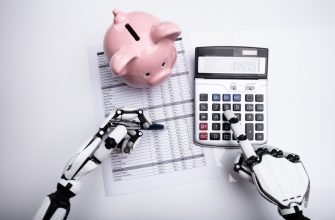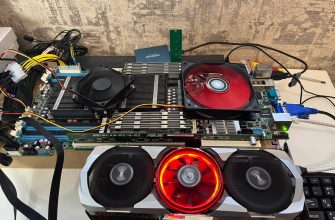In what programming languages trading robots are written is not an idle question and does not have a clear answer. The most common and interesting question for users starting to engage in
algorithmic trading, is: “What is the best programming language to create a trading robot?”. There is no single answer here, so there is no “better” option. When choosing a tool for creating a future assistant, it is necessary to take into account a large number of factors: the personal strategy used in the work, the desired functionality and settings, performance, modularity, and others. In this article, we will talk about what knowledge, skills, and tools you need to have in order to create a reliable robot-adviser for stock trading, what programming language is suitable for this, and also consider the main stages of developing a bot.

- What are the advantages and disadvantages of self-development of a trading robot
- What steps are included in the process of developing a trading robo-advisor
- Financial analysis, embedded algorithms, trading engine
- How to choose a language for programming trading robots
- Debugging and testing a trading robot on a virtual account
- Knowledge of what programming languages is needed to create a trading robot – bot development from A to Z
- MetaQuotes Language 5
- FROM#
- Java
- Python
- Tools you will need when developing a trading robot
- Wealth Lab
- MetaStock
- Omega Research
- TSLab
- stocksharp
- livetrade
- SmartX
- The main stages of developing a bot for a trading platform
- Stage 1: idea and detailed descriptions of the future system
- Stage 2: pre-testing
- Stage 3: analysis of the robotic system
- Stage 4: core
- Stage 5: developing a trading strategy
- Stage 6: testing
- Stage 7: analysis of results
- Is it possible to develop a trading robot for exchange work without programming skills?
- Method 1: Writing a trading robot using the tools of your software’s internal language
- Method 2: Using an Excel Spreadsheet
- Method 3: Using Analytics Platforms
- Method 4: using programming languages in the process of developing a trading robot
What are the advantages and disadvantages of self-development of a trading robot
Surely, each participant in exchange trading has more than once thought about developing his own individual
robotic assistant , which would automate the trading process. The easiest way to solve this issue is to contact a programmer who will take into account all the wishes of the trader and create a suitable trading robot. But there are also some “pitfalls” here:
- perhaps the strategy you put into the bot will be profitable;
- not every trader has the opportunity to pay for the service, since the cost of creating a script can start from $5 and end in thousands;
- rarely, when the system suits the buyer after the first time, more often the code is sent for revision to correct the shortcomings;
- you will not be able to figure out what the specialist wrote if you do not know the programming language, which will eventually devalue the product.
Before resorting to the services of a specialist, you can try to develop a robotic system yourself. Programming skills are not required – the service will independently assemble a consultant according to the previously set settings. However, here you can also encounter the following troubles:
- you will not be able to connect any selected indicators to the system;
- such robots do not involve working with analytical data and direct quote streams through the API.
What steps are included in the process of developing a trading robo-advisor
Financial analysis, embedded algorithms, trading engine
First of all, before you start developing a trading advisor, you need to clearly imagine what abilities it will have, what functionality it will include and what tasks it will cover. If you start to analyze these aspects of the robot during the programming process, there is a good chance that you will start looking for more advantageous aspects, and as a result, you will redo the entire system later. The first step is to think over, formalize and develop a trading algorithm. It is important that this algorithm be described in great detail. Creation of algorithms for trading, logic of trading robots: https://youtu.be/02Htg0yy6uc
Note! There can be an unlimited number of conditions for a robo-adviser. It is important here that it fully meets your requirements and completes the necessary tasks, so the developer’s imagination is the limit here.
To create the most detailed primary image of the robot, answer yourself the following questions:
- You need to know at what cost to acquire a particular asset. If we posted, and the order is still hanging, the price has gone. Do we take market prices?
- What to do if the application won back only half? Selling the remainder at market value. After what period of time?
- Disabling the robot before the end of the auction? How much earlier? Will it be based on a calm volatile flat or, on the contrary, on a surge?
- What days will the robot trade? Throughout the week or on highly volatile days like Monday and Friday?
- What stop orders will be programmed into the robo-adviser?
There are a lot of such questions when analyzing markets, and it is important to work through each of them so that there are no troubles at the end of programming and in subsequent work.
How to choose a language for programming trading robots
In the second step, it is important to decide which programming language will be used in development. If you already have some knowledge in the field of programming and you know, for example, C#, then most likely you will write a stationary application that will use the API of your broker’s trading terminal, let’s say it will be the QUIK software product.

Interesting! If you have no experience with programming, but want to learn these skills and develop your own bot, pay attention to the QPILE and QLUA languages that are built into the QUIK workflow.
Debugging and testing a trading robot on a virtual account
The third step will be to check our work when the robot is formed and written.
Important! The stage of testing and debugging is extremely important in this case, since even the smallest mistake in the system can cost a lot of money!
It is better to test the robot in a forward format. That is, we choose a short period of time, conduct a test, remove some shortcomings, add new elements, then take the next period of time, test and compare the results with the previous ones. And so on. If the robotic system showed good results at each time interval, you can move on to real testing. A virtual account is almost identical to real sales, only there is no risk of losing all your profits at the slightest mistake. However, it is still important to test the software product on minimal volumes, since no one has canceled the broker’s commission fees, especially if a new untested strategy that you have not previously used in trading is added to all this.
Important! In trading, you need to calculate your actions several moves ahead, be prepared for failures. However, it is also important to notice the positives, even profitable micro trades, during the testing phase.
Knowledge of what programming languages is needed to create a trading robot – bot development from A to Z
Analyzing all the above information, one can come to the logical conclusion that choosing a language or several programming languages for creating a robotic platform is already a difficult stage, and it requires a deep analysis of the system. When choosing a programming language for developing a robotic investment advisor, it is important to consider the following factors:
- availability of specific documentation;
- are there reference sources for the chosen programming language, so that in case of a question there is where to turn;
- availability of free samples available;
- chats, forums, conversations where you can ask for advice from experienced developers or amateurs who have successful work in their assortment;
- the prevalence of the exchange where you are going to use the robot consultant.
Even the most insignificant understanding of the programming language in which you decide to write a script will give you the opportunity to independently analyze the finished system and edit it after work is completed. So you don’t have to ask for help or advice from an experienced specialist every time, and less time will be spent
In addition, the corresponding programming languages are used to develop various areas of the robot-adviser:
- trading engine – an accessible and simple system responsible for performing light tasks, created in C, C ++;
- trading robot for managing settings – this system is responsible for managing algorithms and editing the user interface, includes mechanisms for presenting trading results; a program is written in C ++, C #, Java and the like;
- service for testing the working platform based on historical data and selecting parameters for trading – the module is responsible for testing new algorithms based on historical data, and also reconfigures the current algorithms; only scripting programming languages are used for writing.

So what programming language to choose for writing a trading robot: Java, Python , C# or C++? Today, the stock market puts forward its own conditions, this also includes the development of trading robots, namely their functionality, which is limited to exchanges, given the language in which the assistant was written. The following languages are in the greatest demand: MetaQuotes Language 5, C#, Java, Python and C++. The last two are the easiest to learn. 
Method 2: Using an Excel Spreadsheet
The main advantage of this method is the simplicity and ease of implementation. It is perfect for beginners who have no idea about programming languages. To write an automated investment broker, you will need to get acquainted with the most primitive language – VBA. The syntax is easy, so it won’t take long to learn.
The disadvantages of using an Excel spreadsheet are slow work and some problems when introducing a robot into a trading system.
Method 3: Using Analytics Platforms
The use of such analytical platforms as MetaStock or WealthLab does not endow the robot with trading functions, it is important to adapt them during the development process. The advantages of this method include the ability to check based on historical data, and the disadvantages are frequent failures in systems and the need to connect additional tools to the development process.
Method 4: using programming languages in the process of developing a trading robot
Based on the information described above, we found out that the most popular and in demand for creating an automated investment broker are such programming languages as Java, Python, C#, C++ and others. The main advantage of systems written specifically through the software method is high speed and efficiency. The user can also optimize, use different formulas and try original strategic moves in their trading. You can find the necessary formulas on the Internet and substitute them into your trading strategy, taking into account certain assets. So, we figured out how to develop your own trading robot and what is required for this. The development process is not that complicated, but it is important to understand that the slightest mistake made in it can lead a trader to losses,



